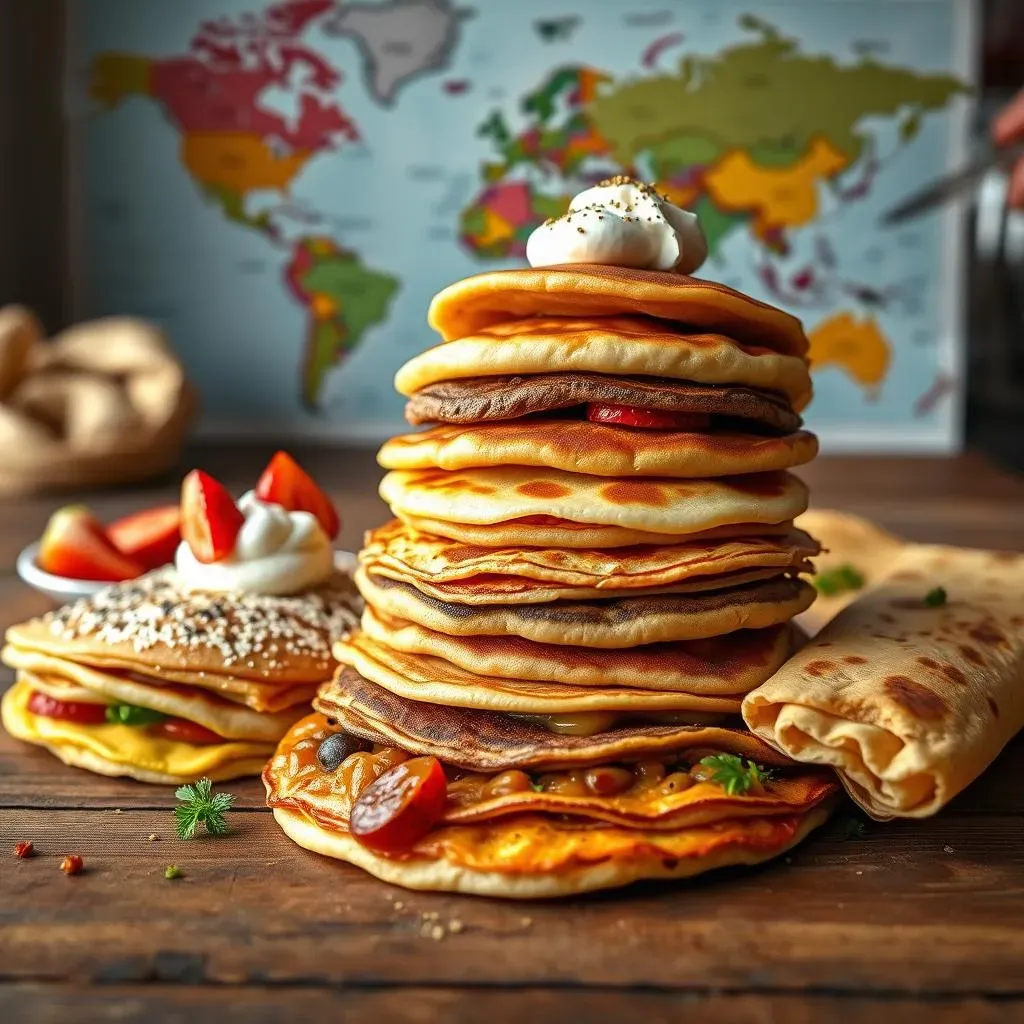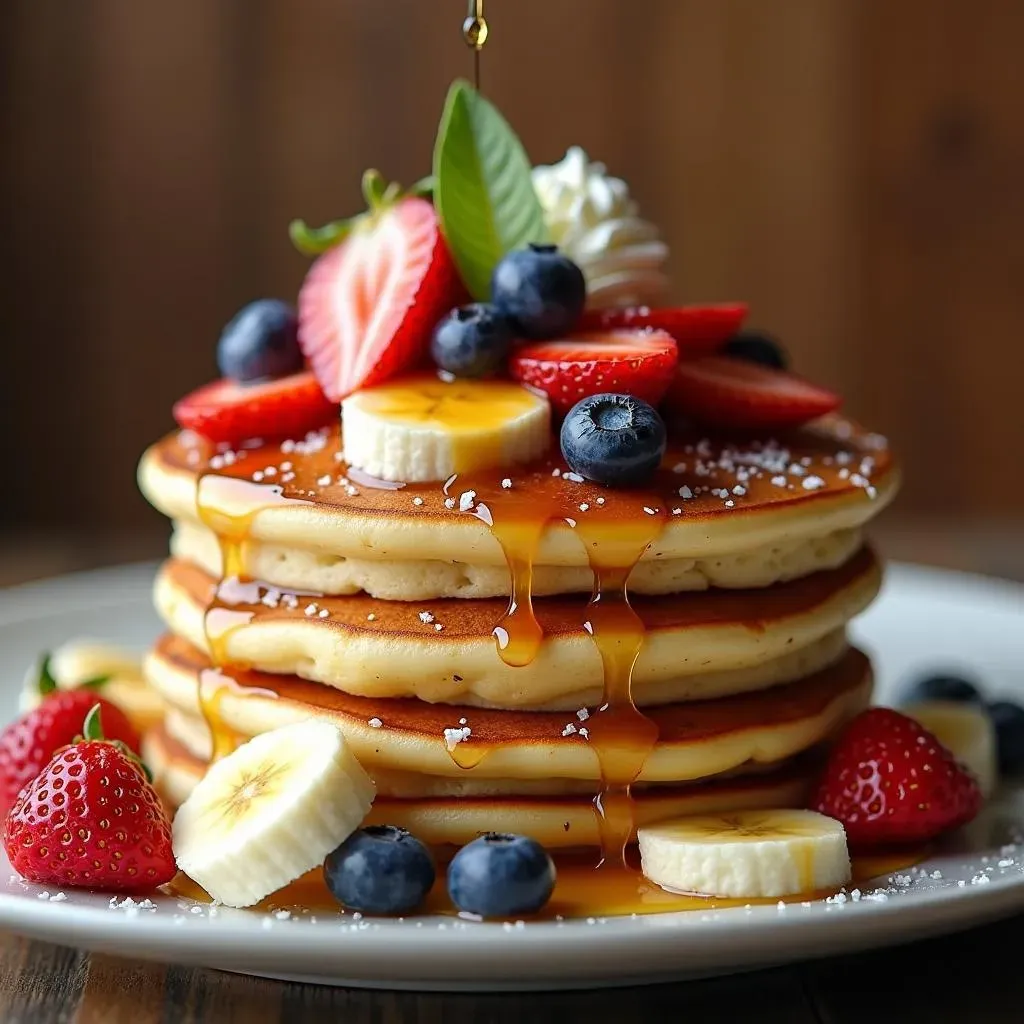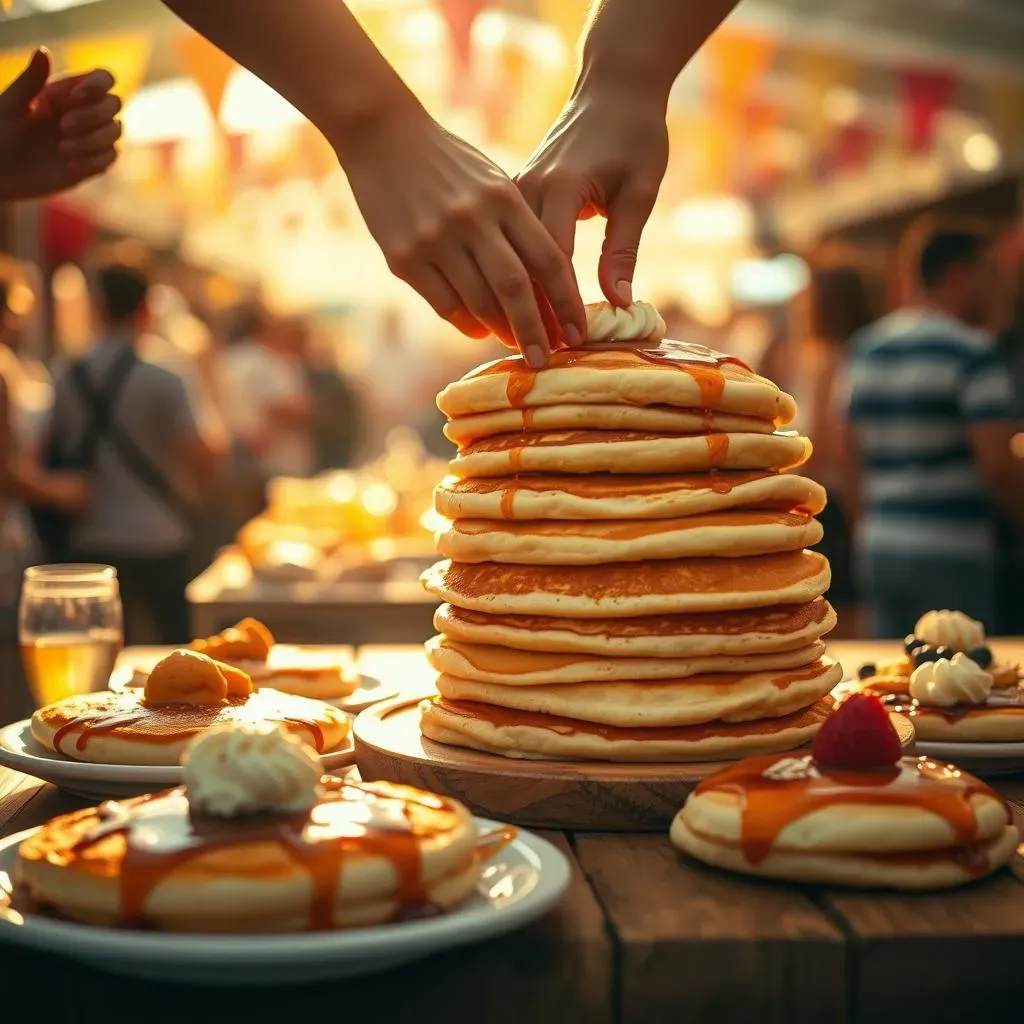Table of Contents
When you think of pancakes, does a stack dripping with maple syrup immediately pop into your head? You're not alone. But the question "is pancakes american?" isn't as simple as it seems. While they're a breakfast staple in the United States, fluffy pancakes are just one small piece of a much larger, global story. We're going to flip through the history books and travel the world, exploring how different cultures have their own unique take on this simple, yet satisfying, dish. Forget what you think you know about pancakes, because they're not just an American phenomenon. We'll uncover the fascinating origins and varieties that exist far beyond the borders of the US, from thin, delicate crepes to hearty, savory options. Get ready to have your perception of pancakes completely turned upside down, it's going to be a delicious adventure. So, grab a fork, and let's dig in.
Pancakes Around the Globe: Not Just an American Thing

Pancakes Around the Globe: Not Just an American Thing
A Global Breakfast Staple
So, you think pancakes are just an American thing? Think again! This isn't some new food trend; people have been flipping flat cakes for centuries. Ancient Greeks and Romans enjoyed their own versions, which is pretty wild when you stop and think about it. These weren't exactly the fluffy stacks we know today, but the basic concept of a batter cooked on a hot surface has been around for a long, long time. It's like the food version of a classic tune that everyone puts their own spin on.
It’s amazing how something so simple can morph into so many different styles depending on where you are in the world.
Beyond Borders: Regional Twists
Now, let’s get into the fun stuff: the regional variations. Forget the uniform stacks of the US, the world of pancakes is a real tapestry. France gives us the delicate crepe, so thin it almost disappears on the plate. Then there are the blini from Eastern Europe, often served with savory toppings like smoked salmon or sour cream, or injera from Ethiopia, which is a spongy, sour flatbread made from teff flour. And let's not forget the dosa from South India, a thin, crispy pancake made from fermented rice and lentil batter. Each one is unique, different, and totally delicious in its own right.
Country | Pancake Style | Key Ingredients | Typical Toppings |
|---|---|---|---|
France | Crepe | Wheat flour, eggs, milk | Nutella, fruit, whipped cream |
Eastern Europe | Blini | Wheat or buckwheat flour, yeast | Sour cream, smoked salmon, caviar |
Ethiopia | Injera | Teff flour, water | Stews, vegetables, meats |
South India | Dosa | Rice, lentils | Sambar, chutney, potatoes |
More Than Just a Morning Meal
The other cool thing is that pancakes aren’t limited to breakfast, like they often are in the US. In many places, they’re eaten any time of day, as a snack, a side, or even the main event. It really shows how adaptable this simple dish is. It's not just a quick breakfast; it's a way to express culinary creativity and cultural heritage. So next time you’re flipping a pancake, remember, you’re part of a long and tasty global tradition. It's a little mind-blowing, isn't it?
Think of it, you are joining a global food party that's been going on for centuries.
American Pancakes vs. Other Styles: What Makes Them Different?

American Pancakes vs. Other Styles: What Makes Them Different?
The Rise of the Fluffy Stack
Okay, so we've seen that pancakes aren't just an American thing, but what exactly makes American pancakes, well, American? The secret is in the rising agents. Unlike many other styles that rely on just flour, eggs, and milk, American pancakes usually include baking powder or baking soda. This is what gives them that signature fluffy, cake-like texture. Think of them as little individual cakes that happen to get cooked on a griddle. The batter is also often a bit thicker, which contributes to that substantial, satisfying bite. It's like a cloud you can eat, if you will.
And that's why they often get called hotcakes, flapjacks, or griddle cakes, which is pretty descriptive, if you ask me.
Texture, Taste, and Toppings
The texture difference is a big deal, but it's not the only thing that sets American pancakes apart. Taste-wise, they tend to be a bit sweeter because of the added sugar in the batter. And let's talk toppings: butter, maple syrup, fruit, whipped cream, chocolate chips – the list goes on. It's like a blank canvas for your sweet tooth. It’s like a party on a plate, and everyone’s invited. Compare this to a crepe, which is light and thin, or a dosa, which is crispy and savory, and you can see how much variety there really is in the world of flat cakes. It's like comparing a sponge cake to a tortilla, they're both flat and made with similar ingredients, but that's where the similarities end.
Feature | American Pancakes | French Crepes | Indian Dosas |
|---|---|---|---|
Texture | Fluffy, cake-like | Thin, delicate | Thin, crispy |
Rising Agent | Baking powder/soda | None | Fermentation |
Taste | Sweet | Neutral/Slightly Sweet | Savory |
Typical Toppings | Butter, maple syrup, fruit | Nutella, fruit, jam | Sambar, chutney |
A Matter of Preference
Ultimately, whether you prefer American-style pancakes or other kinds is all a matter of personal taste. There is no right or wrong. Some people adore the fluffy, sweet, indulgent experience of an American pancake stack, while others prefer the delicate elegance of a crepe or the savory crunch of a dosa. The beauty of it all is the sheer variety. It’s like a choose-your-own-adventure, but with pancakes. Each style has its own charm, its own history, and its own place in the culinary world. So next time you're deciding between a stack of fluffy pancakes or something a little different, remember the global journey that each style has taken.
It's a delicious reminder that food is a universal language with many different dialects.
Pancakes: More Than Just Breakfast

Pancakes: More Than Just Breakfast
Pancakes for Every Occasion
So, we've established that pancakes are a global phenomenon, and not just an American breakfast thing. But let's get real, who says pancakes are only for breakfast anyway? I mean, sure, they're great with eggs and bacon, but they can be so much more. Think about it: pancakes as a snack, a dessert, or even a base for a savory meal. They're incredibly versatile, and that's what makes them so awesome. It's like they're saying, "Hey, I can be whatever you want me to be!"
They are the culinary equivalent of a chameleon, adapting to any meal, any time.
Pancake Parties and Celebrations
And it's not just about eating them at different times of the day, it’s also about how they bring people together. In many cultures, pancakes are a big part of celebrations and social gatherings. For example, in Britain and the Commonwealth, Shrove Tuesday, also known as Pancake Day, is a big deal. It's a day to eat pancakes and use up all the fat and rich ingredients before Lent. It's a tradition that’s both fun and delicious. It is like a big, yummy food festival, where everyone is invited to participate.
It's a perfect example of how food can be a cultural connector, bringing people together through a shared love of something tasty.
Celebration/Event | Region | Pancake's Role |
|---|---|---|
Shrove Tuesday/Pancake Day | Britain, Commonwealth | Traditional meal before Lent |
Various Festivals | Worldwide | Social gathering food |
Any Time | Everywhere | Snack, dessert, main dish |
The Pancake Verdict: A Global Delight
So, is pancakes american? The short answer is, not really. While America has certainly embraced the fluffy, syrup-drenched version, pancakes are a global food with roots stretching back centuries. From the thin crepes of France to the savory injera of Ethiopia, the basic concept of a flat, cooked batter has taken on countless delicious forms. The next time you flip a pancake, remember that you're participating in a culinary tradition that spans continents and cultures. It's a reminder that even the simplest foods can have a rich and fascinating story to tell, and that while we all have our own preferences, a good pancake is a universal joy.